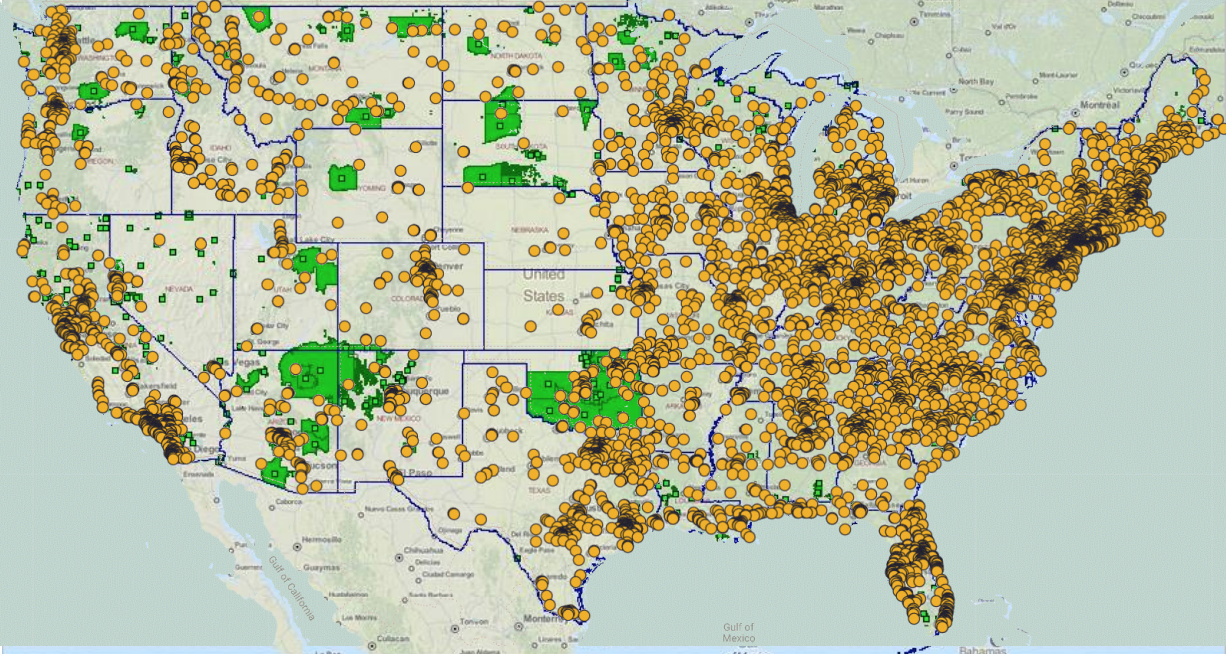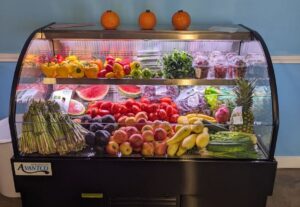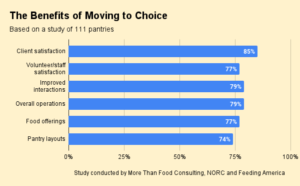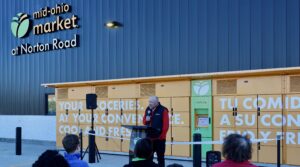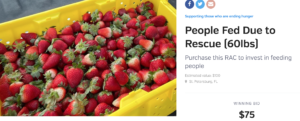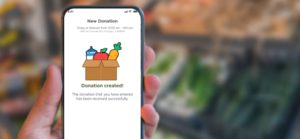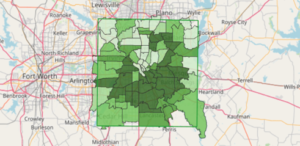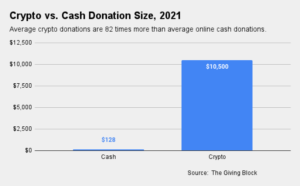When Gary Oppenheimer, Founder and Executive Director of AmpleHarvest.org, set out to expand food access in Native American reservations, he ended up focusing on a few small details that made all the difference.
Oppenheimer had built up a large database of more than 8,000 food pantries across the country, as he sought to fulfill AmpleHarvest.org’s mission of connecting home gardeners who have surplus bounty with local food pantries that could use the fresh produce. But there were large swaths of the country where it had no information about local pantries and so couldn’t direct gardeners to make donations.
In looking at AmpleHarvest.org’s nationwide map, Oppenheimer realized that many of the places where AmpleHarvest.org did not have pantry relationships were also Native American reservations (depicted in green, above). As he began working to extend AmpleHarvest.org’s presence throughout Indian Country, Oppenheimer found, “there were a lot of little things that needed to be done.”
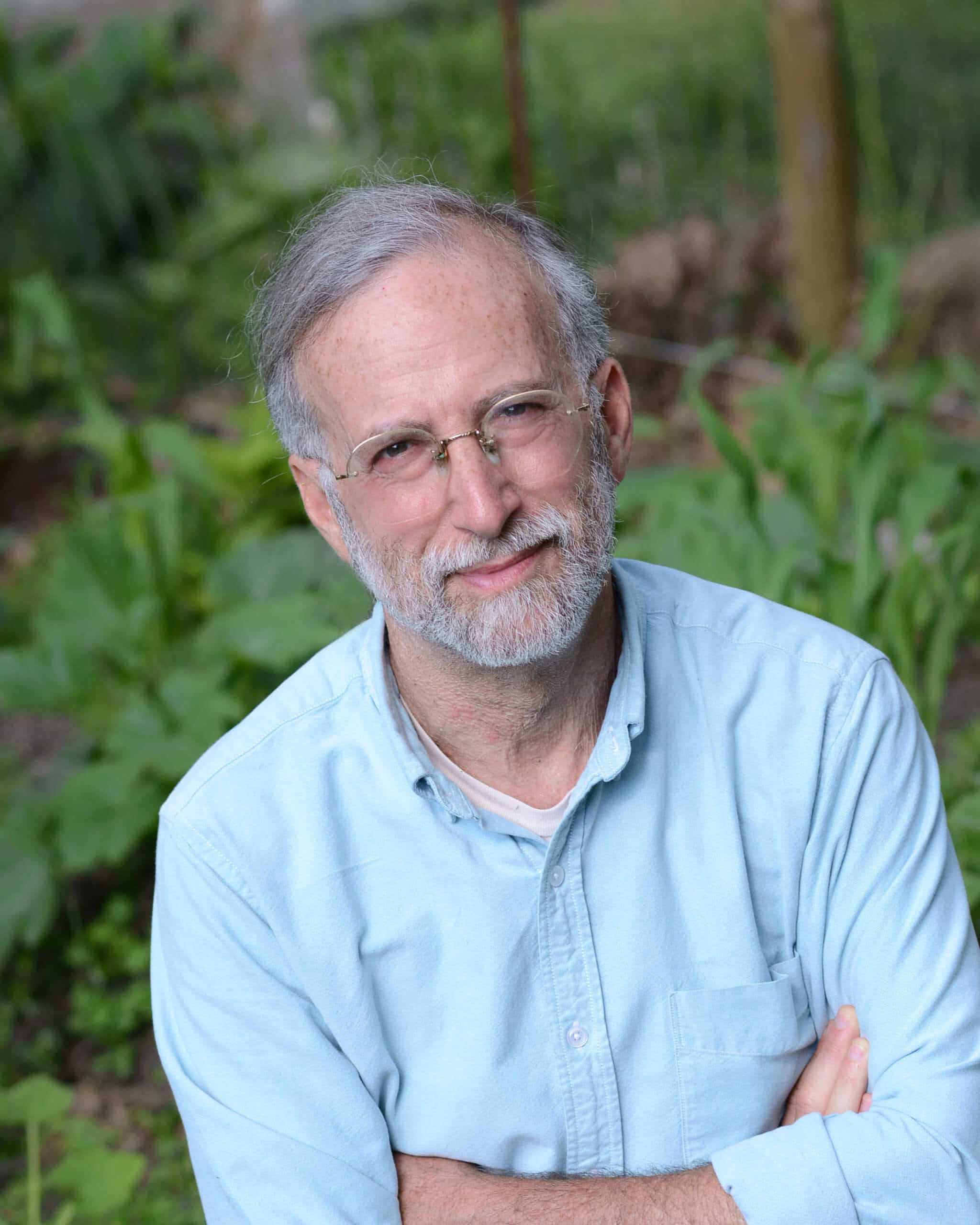
One of the biggest issues was the fact that street addresses are not commonly used in some tribal communities, making it difficult to tell gardeners exactly where to drop their produce. To address the problem, AmpleHarvest.org partnered with a U.K.-based technology company that has developed a one-of-a-kind geolocation system.
What3Words divides the world into 10- by 10-foot squares and gives each a unique identifier made from three words. By downloading the app, users can input the three words associated with a specific location, such as a pantry, and be directed to the exact 10- by 10-foot area where the pantry’s door is located.
Originally developed to help friends find each other on the beach, the app has evolved to address all kinds of use cases, including giving precise locations to ride-hailing apps and emergency services. As the app becomes better known throughout Indian Country, Oppenheimer said he expects other entities like UPS, the ambulance corps and the police could also take advantage of it. “It solves a huge problem that has crippled tribal communities,” he said.
AmpleHarvest.org also adjusted its business model to accommodate certain business practices in Indian Country. Typically, AmpleHarvest.org requires a participating food pantry to be affiliated with a nonprofit and give away food for free. But on a reservation, a food pantry may be nothing more than a couple of shelves in the back of a store or a gas station. “We adapted our model to allow for the reality of how tribal communities work,” Oppenheimer said.
In an acknowledgement that cell service and internet access can be difficult in Indian Country, AmpleHarvest.org also made changes to its website – like using lower-resolution images that can be loaded faster.
One aspect of Indian Country that meshes well with AmpleHarvest.org’s mission is that sharing food is intrinsic to tribal values and traditions. Plus, the food that is shared is grown by gardeners within the community, so it easily meets taste and cultural expectations. “We’re not trying to put a round peg in an oval hole,” Oppenheimer said.
In targeting Indian Country, AmpleHarvest.org is addressing a segment of the population that is disproportionately affected by food insecurity. One in four Native Americans suffers from food insecurity, compared to one in 12 white, non-Hispanic individuals, according to Feeding America. Native Americans also have higher rates of chronic illnesses like heart disease and diabetes compared to other ethnic groups.
Oppenheimer’s relationship with Chief Henry Red Cloud, a fifth-generation descendant of a Native American war chief, was instrumental in guiding AmpleHarvest.org’s work in Indian Country. The two met over a decade ago at an awards ceremony and stayed in touch. Oppenheimer also attended the Native American Nutrition conference in May of this year to listen and learn. “We wanted to know what we didn’t know,” he said.
AmpleHarvest.org has already begun working with a handful of reservations to raise awareness among pantries and gardeners about connecting through its website. It expects to have pantries identified within all of the nation’s 385 reservations by the end of 2023 and plans to work with regional food banks to aid that effort. “There’s no reason that a reservation in any part of the country shouldn’t be aware of AmpleHarvest.org and take advantage of it,” Oppenheimer said. – Chris Costanzo
PHOTO, TOP: The map shows all the places where AmpleHarvest.org has pantry relationships, with the green indicating Native American reservations.
Like what you’re reading?
Support Food Bank News
This article was made possible by the readers who support Food Bank News, a national, editorially independent, nonprofit media organization. Food Bank News is not funded by any government agencies, nor is it part of a larger association or corporation. Your support helps ensure our continued solutions-oriented coverage of best practices in hunger relief. Thank you!
Connect with Us:
